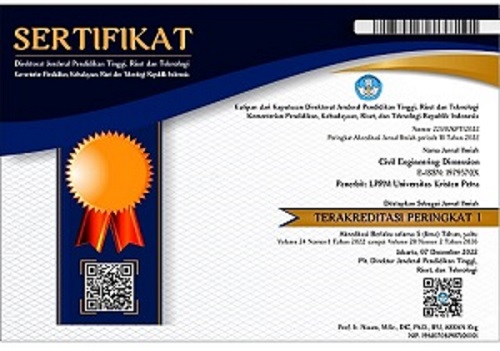Derivation Of Moving Least-Squares Approximation Shape Functions And Its Derivatives Using The Exponential Weight Function
 :
:
https://doi.org/10.9744/ced.9.1.pp.%2019-24
Keywords:
meshless methods, moving least-squares, weight function.Abstract
In recent years, meshless methods have gained their popularity, mainly due to the fact that absolutely no elements are required to discretize the problem domain. This is possible due to the nature of the approximation functions used in this method. Approximation functions used to form the shape functions use only the so-called ânodal selectionâ procedure without the need of elements definition. The most popular approximation function used is the moving least-squares shape functions. Published works in meshless methods, however, present only the basic formulas of the moving least-squares shape functions. This paper presents the complete and detailed derivations of not only the moving least-squares shape functions, but also their derivatives (up to the second order derivatives), using the exponential weight function. The derivations are then programmed and verified.Downloads
Published
2007-04-03
How to Cite
Tanojo, E. (2007). Derivation Of Moving Least-Squares Approximation Shape Functions And Its Derivatives Using The Exponential Weight Function. Civil Engineering Dimension, 9(1), pp. 19-24. https://doi.org/10.9744/ced.9.1.pp. 19-24
Issue
Section
Articles
License
Authors who publish with this journal agree to the following terms:- Authors retain the copyright and publishing right, and grant the journal right of first publication with the work simultaneously licensed under a Creative Commons Attribution License that allows others to share the work with an acknowledgement of the work's authorship and initial publication in this journal.
- Authors are able to enter into separate, additional contractual arrangements for the non-exclusive distribution of the journal's published version of the work (e.g., post it to an institutional repository or publish it in a book), with an acknowledgement of its initial publication in this journal.
- Authors are permitted and encouraged to post their work online (e.g., in institutional repositories or on their website) followingthe publication of the article, as it can lead to productive exchanges, as well as earlier and greater citation of published work (See The Effect of Open Access).
















